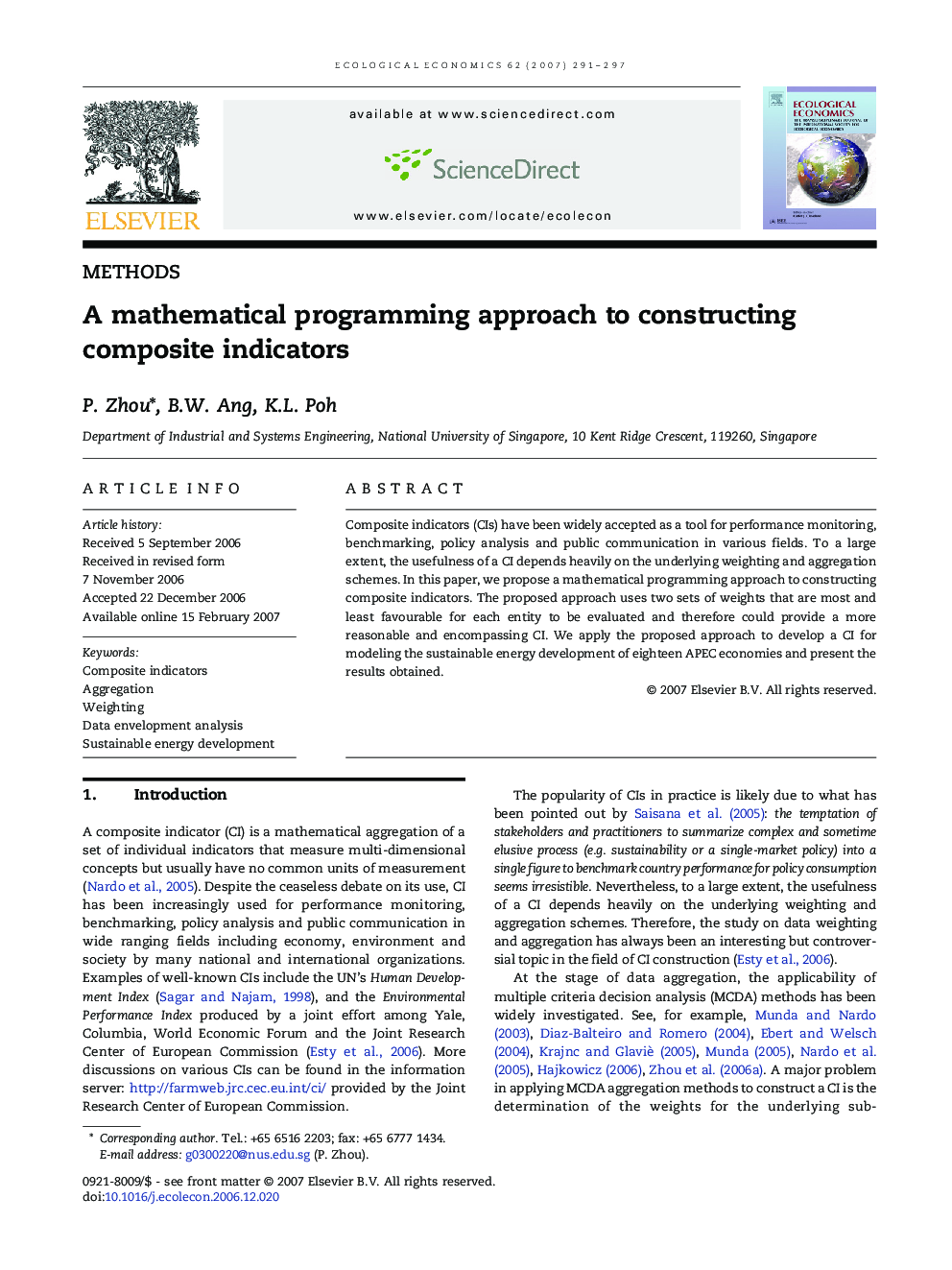| Article ID | Journal | Published Year | Pages | File Type |
|---|---|---|---|---|
| 5051990 | Ecological Economics | 2007 | 7 Pages |
Abstract
Composite indicators (CIs) have been widely accepted as a tool for performance monitoring, benchmarking, policy analysis and public communication in various fields. To a large extent, the usefulness of a CI depends heavily on the underlying weighting and aggregation schemes. In this paper, we propose a mathematical programming approach to constructing composite indicators. The proposed approach uses two sets of weights that are most and least favourable for each entity to be evaluated and therefore could provide a more reasonable and encompassing CI. We apply the proposed approach to develop a CI for modeling the sustainable energy development of eighteen APEC economies and present the results obtained.
Keywords
Related Topics
Life Sciences
Agricultural and Biological Sciences
Ecology, Evolution, Behavior and Systematics
Authors
P. Zhou, B.W. Ang, K.L. Poh,
